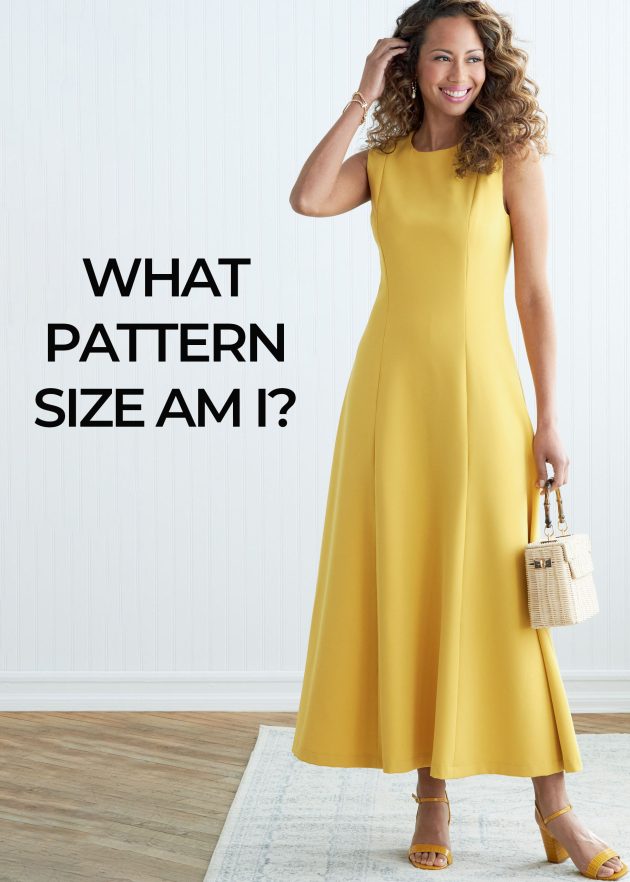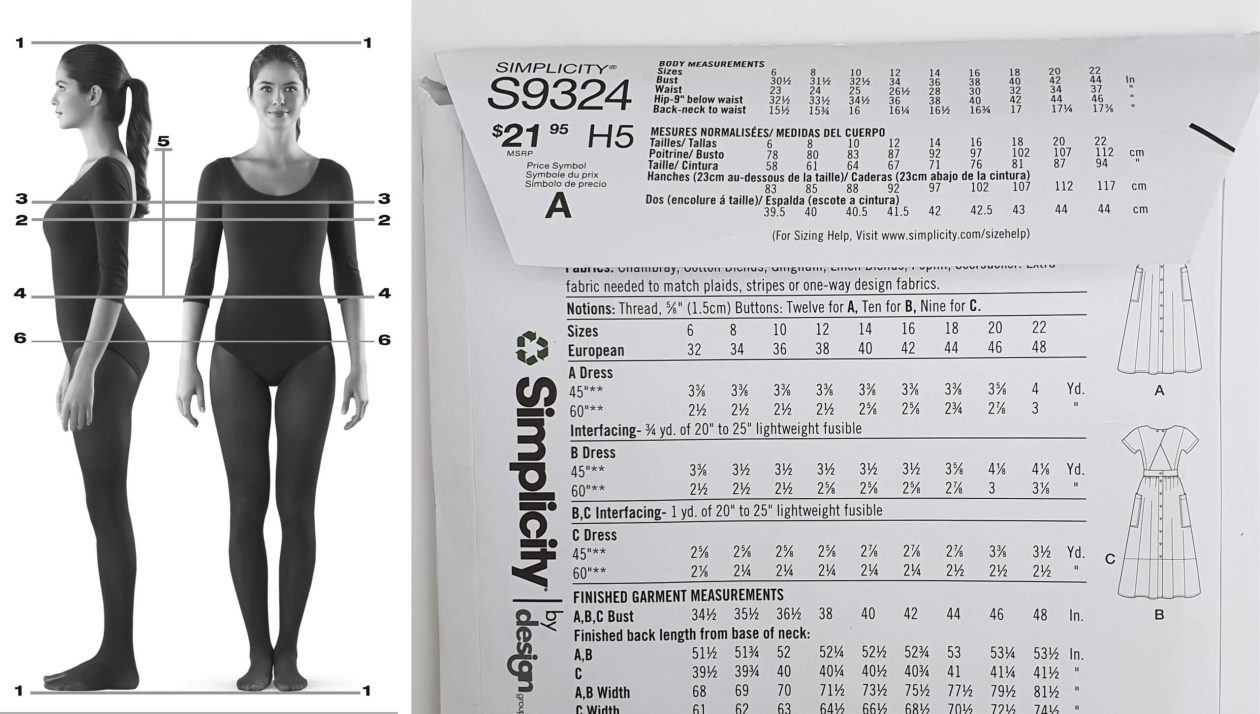
What pattern size am I?
Watch our FREE video workshop on pattern sizing to learn more:
CHOOSING A SIZE
The biggest question we get asked is what pattern size to choose. So we’re here to help you understand the three key things to keep in mind when deciding on what size to sew. All our patterns are multi-sized to give you the best options possible. Let’s compare:
- Body measurements
- Pattern size chart
- Garment finished measurements

FIRST, you’ll need to know your accurate body measurements, not your Ready-To-Wear size. Our handy guide will show you how to take all the measurements you need to get started.
SECOND, you’ll want to look at the envelope flap for the size chart which will help you know which size pack to buy. You can also view these from any pattern’s product page or the Size Guides section of the website in our footer.
The charts match body measurements to sizes. This may be numbered or lettered sizing and on some patterns may be presented as bands eg S = 8-10. Different pattern companies use different charts so don’t assume you’ll be the same size across all brands.
THIRD, you’ll want to check the finished garment measurements. The bust, waist and hip finished measurements are printed on the pattern tissue in the corresponding location. Plus certain finished measurements are on the back of many of pattern envelopes where space allows.
These will help you hone in on exactly what size to make, how to adjust the size and picture what the finished garment will look like before you start!
LET’S TALK ABOUT EASE
What is ease, anyway? Ease is the difference between the body measurement and the finished garment’s measurement at the same body part. But there are actually two types of ease – Wearing Ease and Design ease.
Wearing ease is the amount needed to actually wear the garment, so you can lift your arms, sit down, BREATHE etc. Some people prefer more wearing ease, for a looser fit; some prefer less wearing ease, for a more snug fit. This is strictly a personal choice. A good rule of thumb is 1-2″ of ease but more ease can be helpful if you have difficulty getting dressed or have a sensitivity to fabrics touching your skin.
Design ease is the amount given for a specific design to get a certain look. Vintage styles from the 40s and 50s often have little design ease, choosing a form fitting silhouette. Coats and Jacket have ease built in so you can wear them on top of other clothes. And some fashion shapes can be exaggerated and oversized. Big puff sleeves or balloon leg trousers spring to mind as the excess ease creates a dramatic shape beyond what you need to move in the clothes.
One last note about ease: Fabrics make a difference. Some fabrics have more give than others, so garments made out of these fabrics need less ease than others. This is especially true of stretch fabrics like jersey or knits. If your fabric is a woven with a little bit of stretch content and the pattern doesn’t call for that, you might find you can size down your make slightly.
Negative ease is when you’re using a stretch fabric with a pattern designed for stretch fabric. Here the designer has already considered the ease and will have actually removed some. Stretch fabrics have so much give that often the pattern pieces are designed smaller than your body measurements. This is called negative ease and helps achieve a close fit by counteracting the stretch in the fabric. This only works if you use a fabric with the right stretch percentage using the Pick-a-Knit rule on the back of your envelope.
| Garment | Use this MEASUREMENT for correct size |
|---|---|
| Dresses, Tops, Jackets and Separates | BUST:Or if you have more than 2 1/2” (6.3cm) difference between and High Bust, select your pattern size using your HIGH BUST* measurement. |
| Skirts & Pants | WAIST measurement: (if your hips are two sizes or more larger than your waist, use HIP measurement. |
| Maternity | SAME PATTERN SIZE you used before pregnancy. |
| Between Two Sizes | SMALLER SIZE for a closer fit, or if you are small-boned, LARGER SIZE for a looser fit. |
Misses patterns are made for a B cup with 2 1/2″ (6.3cm) difference between Bust and High Bust measurement.”
